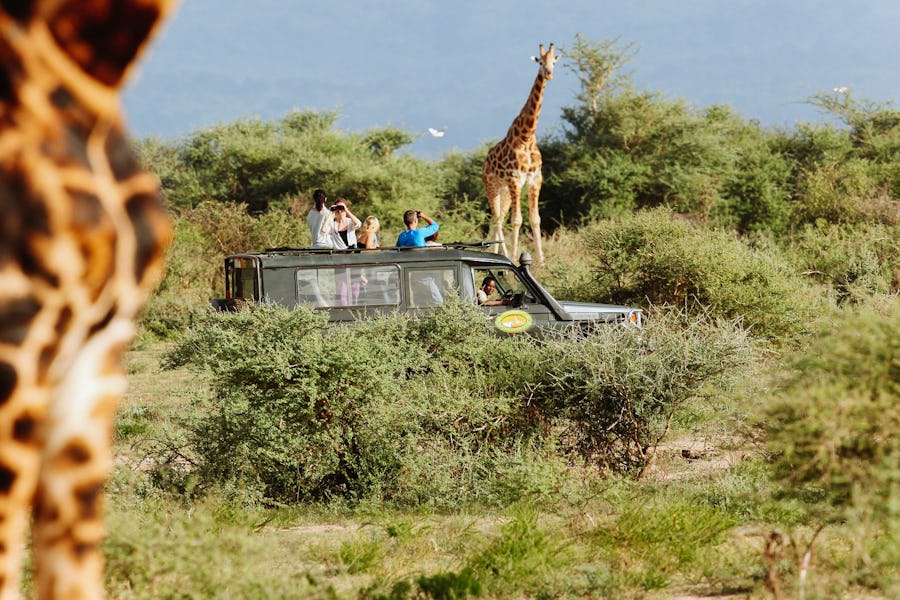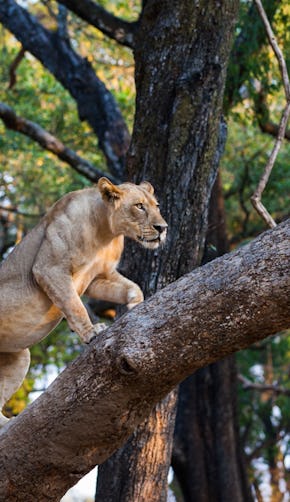We think it’s safe to say that no other wildlife experience comes close to spending time with the mighty mountain gorilla – but which is the best place for your gorilla safari? There are over 800 of the furry apes left in the world, and the majority of them live in the Virunga Mountains straddling Rwanda (Volcanoes National Park) and the Democratic Republic of Congo (Virunga National Park), and the Bwindi Impenetrable Forest in south-west Uganda. That narrows it down slightly then, but which destination is cheapest? How many gorillas are in each? And how on earth are you going to get there? Here’s our guide to gorilla trekking in Rwanda, Uganda and the DRC that might help you make up your mind…
How do I get there?
A good place to start for all three countries is a flight to Kigali in Rwanda. Flights have become much more accessible (and cheaper) in recent years and your best bet is to fly in from Nairobi in Kenya. For a gorilla safari in Rwanda, you’ll hop in a car and transfer for 2-3 hours to Ruhengeri, the base for all gorilla treks in Volcanoes National Park. To get to Bwindi in Uganda, it’s a 3-4 hour road transfer from Kigali with a border crossing, or if you fly to Entebbe, it’s a 9-10 hour drive (but we would recommend breaking the journey – more about that later!). To get to the DRC, you will drive from Kigali to the border crossing at Goma (3 hours) before using a different vehicle for the drive to Virunga (c. 90 minutes).
How much does it cost?
All countries require visitors to have a permit for gorilla trekking, and the number of permits available each year fluctuates depending on the government’s need for tourist income vs. research. One permit is valid for one day and one hour with the gorillas. Rwanda is the most expensive country to visit, with permits costing USD 1500(**). High numbers are issued, but they get booked quickly so you’ll need to plan in advance. A permit for gorilla trekking in Uganda costs USD 800 and in the DRC, c. USD $400-450, but both of these countries are more expensive to get to so it really does all balance out.
Will I definitely see the gorillas?
Out of all the remaining gorillas in the wild, only a proportion of families are habituated and available for gorilla trekking. In Rwanda, this is around 7 families, in Uganda c. 4 families and in the DRC, c. 5 families, but the numbers do change depending on research needs. Each family can have anything from 9 to 39 members. Early in the morning, trackers will head into the mountains to locate each family, meaning your chances of seeing the gorillas are extremely high – but we can’t promise anything!
What’s the accommodation like?
In both Rwanda and Uganda, there’s a good choice of medium-budget and top-end lodges for a gorilla safari. In Rwanda, a classic top-end choice is Sabyinyo Silverback Lodge, and a lower budget option would be Mountain Gorilla View Lodge. In Uganda, top choices include Clouds and the Gorilla Forest Camp, whilst Buhoma is a lower-budget alternative. Generally, lodges in Uganda might be slightly more affordable than in Rwanda, but not by much. In DRC, the accommodation is limited to Mikeno Lodge and Bukima Tented Camp but both are brilliant and the staff are fantastic.
What else can I see?
Gorilla trekking in Rwanda combines excellently with a safari in Kenya or Tanzania as it can be done in a couple of days and transport links are good. Try The Big Six itinerary (Volcanoes & the Masai Mara) and add some down-time on the Kenyan coast.
Uganda, however, is a fantastic safari destination in its own right. The Gorillas and Gameparks itinerary combines Bwindi with Queen Elizabeth National Park, but you could add stops in Murchison Falls or Kibale for chimpanzee trekking (and breaking up that long journey from Entebbe).
In the DRC, it’s all about the adventure and if you’re going to make the journey, you might as well make the most of it… A Volcanic Adventure includes gorilla trekking, a night at the top of active Nyiragongo Volcano and a stop at Lake Tchegera to, er, revive yourself at the end! If you have lots of time (and pennies) to spare, it’s also possible to combine gorilla trekking in Congo with a safari in Kenya – have a look at Gorillas, Rhinos & the Special Five for a base.
So, there we have it – the pros and cons of each destination. If we had to sum it up in a few short words, this is what we would say: if your gorilla safari is a small part of a bigger trip in East Africa, pick Rwanda for its ease. If you’re looking for an off-the-beaten-track safari experience in an unusual country, head to Uganda and try something new. And if you fancy a bit of an adventure (and serious kudos amongst fellow Africa-aficionados), it has to be the DRC. If you still not sure, we have also listed our top 5 lodges for gorilla trekking here.





















